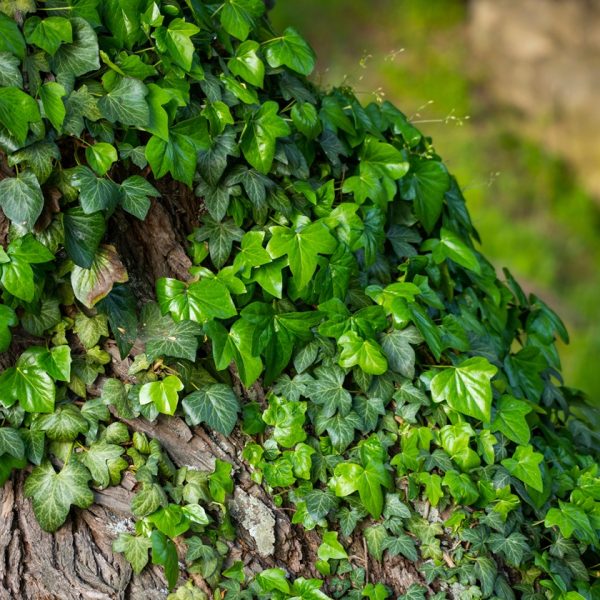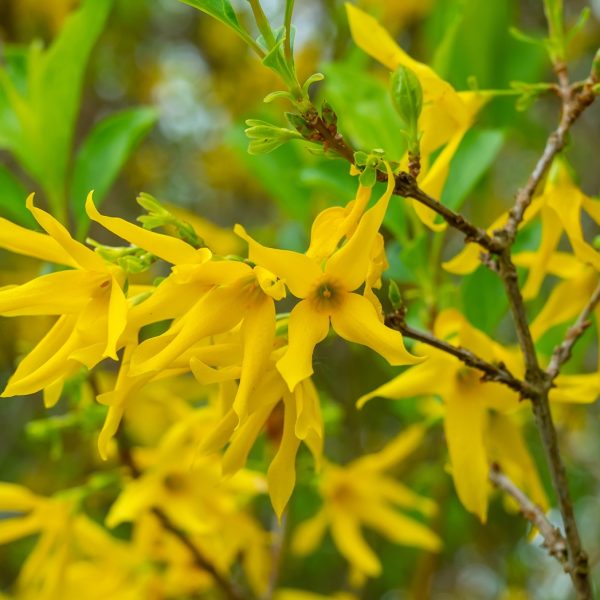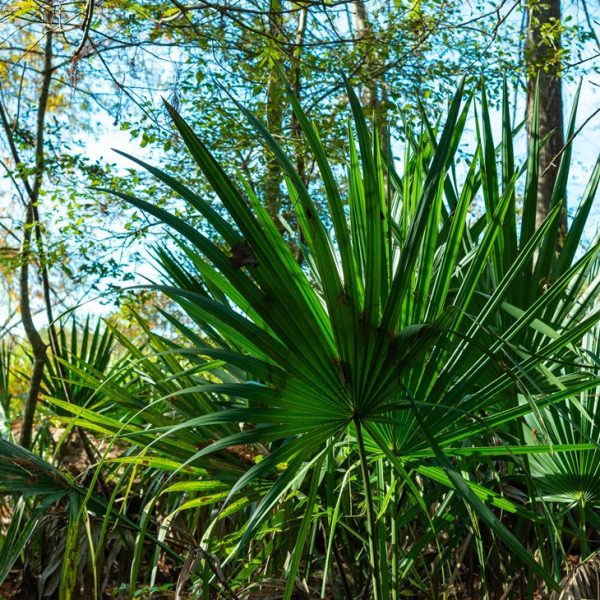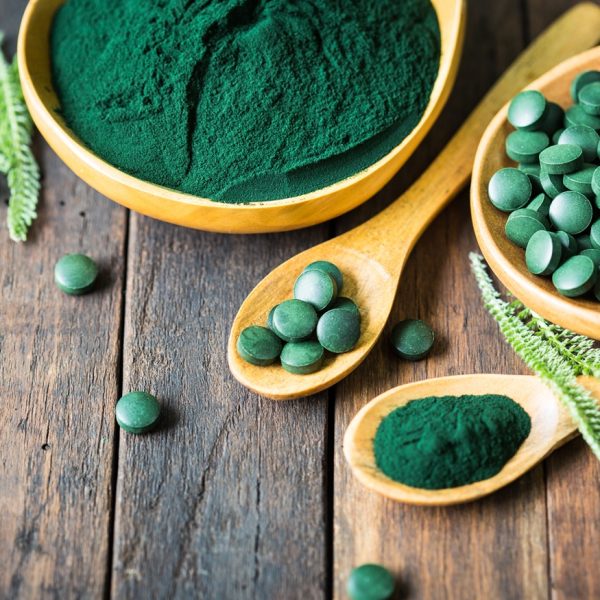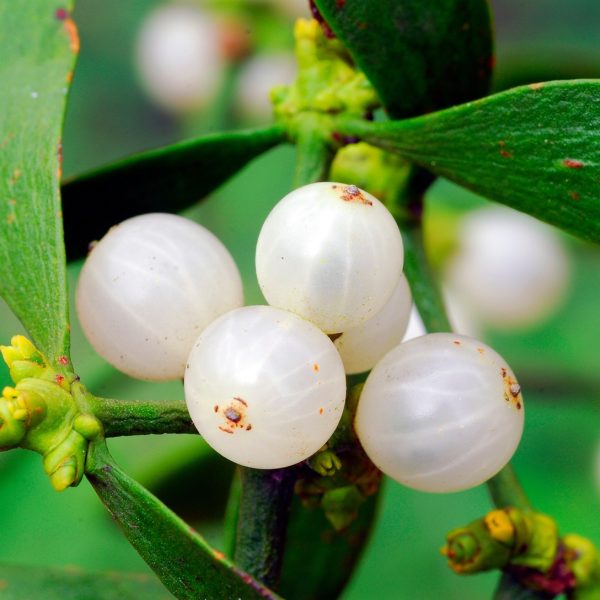-
How does it feel?
The tincture smells intriguing, with a slightly sweet aroma and hints of sourness and acridity. The taste is strongly bitter, sour and acrid, with only a hint of the sweetness that the aroma suggested. The aftertaste is bitter, leaving an intensely acrid, almost acidic, sensation in the throat which lasts for a couple of hours. After a few minutes the tincture can be felt moving through the stomach and into the intestines, as a mild wave of heat. It is the saponins that have a mildly irritating effect on the throat, stomach and the lining of the intestines, linking to the felt sensations in these areas (1). The mild laxative effect of gymnema can be experienced just a few hours after consuming.
If the tincture is swilled in the mouth it will coat the tongue and the taste buds, intensifying the bitter taste and acrid sensation in the mouth. If a sweet food or drink is consumed at this point, the sweet taste will be slightly lessened. The sweetness is still slightly present, but reduced and overall the food/drink tastes more bland. As with the acrid sensation in the throat, the lessening of the sweet taste lasts for around two hours.
-
What can I use it for?

Gymnea (Gymnema sylvestre) Gymnema is effective at regulating blood glucose levels and increasing insulin sensitivity. It is typically used in both type 1 and type 2 diabetes mellitus, to stabilise blood glucose levels, enhance insulin production and release from the pancreas, and inhibit glucose release from the liver (2,3). It can also repair damage to the insulin releasing cells (beta cells) in the pancreas, partially restoring function to the pancreas in type 1 diabetes (4).
Taking a few drops of gymnema tincture on the tongue, drinking an infusion of the leaves, or simply chewing some leaves will block the sweet-taste receptors on the tongue for 1–3 hours (5). This anesthetising of the sweet taste buds reduces the desire to consume sweet tasting food, assuaging sugar cravings and treating sugar addictions (2,6,7,8). Caution is required when taking gymnema alongside diabetic medication, as the dosage may need adjusting to prevent hypoglycaemia (2).
Gymnema also reduces blood lipids and can be used to reduce cholesterol and triglycerides in cases of hyperlipidemia and hypercholesterolaemia (9).
Gymnema is a tropical plant, native to southern Asia, with a long history of use in Ayurvedic medicine. It is difficult to grow outside of tropical regions, putting strain on the native regions to provide global supplies and transportation (10). Attempts to use native, alternative herbs reduces transportation and prevents overharvesting to support a sustainable global supply. A herb which is native to Europe with very similar actions is goat’s rue, which is a suitable alternative for Western practitioners to consider using in their native area.
-
Into the heart of gymnema

Gymnea (Gymnema sylvestre) Gymnema helps stabilise blood glucose levels and normalises fasting blood glucose by:
- Restoring damaged pancreatic tissue by promoting regeneration of islets of Langerhans and beta (β) cells in the pancreas (2,4,11)
- Enhancing insulin secretion from the islets of Langerhans in the pancreas (6)
- Reducing intestinal absorption of glucose (3,12)
- Increasing activity of enzymes in glucose uptake into tissues, and use by the cells (3)
- Inhibiting adrenaline from stimulating the liver to release glucose into the bloodstream (2)
Gymnemic acids bind to the sugar taste receptors on the tongue for 2–3 hours, inhibiting sensitivity to the taste of sugar and sweeteners (7). Gymnemic acids have an atomic structure similar to sugar molecules, allowing them to bind to taste bud receptors and block their activation by sugars in food. (13). Additionally, gurmarin, a polypeptide, also desensitises the palate to the sweet taste, essentially anesthetizing the sweet taste buds (4,6). Together these constituents and actions reduce the pleasurable sensation of the sweet taste and can reduce sweet cravings (8).
Gymnema inhibits the intestinal absorption of glucose, which has been attributed to several of the constituents, and differing mechanisms of action. The gymnemic acids in gymnema leaves increase certain gastrointestinal hormone secretions in the small intestine, which inhibit glucose sensors and transporters in the intestinal lumen (14). The gymnemic acids bind to receptors in the intestinal wall, blocking the absorption of sugar molecules and thereby lowering blood sugar levels (13).
It is also possible that the saponins disrupt the structure of the epithelial wall in the small intestine, impairing the absorption of molecules such as glucose and lipids (4). The saponins also lower serum total cholesterol and triglycerides by increasing faecal excretion of cholesterol and sterols (3,6,15). The saponin, tannins, and steroid constituents all contribute to the anti-inflammatory effects of gymnema (13).
Energetically, gymnema is considered to be a cooling and drying herb (16). The sour taste is often associated with herbs that are energetically cooling, stemming from the flavonoid constituents and antioxidant qualities of the herb (1,17).
-
Traditional uses
Gymnema has been used to treat diabetes in Ayurvedic medicine for 2000 years (16). Traditionally, a tea made from the leaf was used for diabetes, obesity, and to suppress sugar cravings (18). In addition to the broad range of therapeutic effects as a remedy for diabetes, it was also traditionally used for arthritis, diuretic, anaemia, osteoporosis, hypercholesterolemia, asthma, constipation, microbial infections, indigestion, and as an anti-inflammatory (13).
The powdered root was once used as an emetic, expectorant, and analgesic for body-aches, and a juice of the root was used to treat snakebites (2,13).
-
Traditional actions
Herbal actions describe therapeutic changes that occur in the body in response to taking a herb. These actions are used to express how a herb physiologically influences cells, tissues, organs or systems. Clinical observations are traditionally what have defined these actions: an increase in urine output, diuretic; improved wound healing, vulnerary; or a reduction in fever, antipyretic. These descriptors too have become a means to group herbs by their effects on the body — herbs with a nervine action have become the nervines, herbs with a bitter action are the bitters. Recognising herbs as members of these groups provides a preliminary familiarity with their mechanisms from which to then develop an understanding of their affinities and nuance and discern their clinical significance.
-
Traditional energetic actions
Herbal energetics are the descriptions Herbalists have given to plants, mushrooms, lichens, foods, and some minerals based on the direct experience of how they taste, feel, and work in the body. All traditional health systems use these principles to explain how the environment we live in and absorb, impacts our health. Find out more about traditional energetic actions in our article “An introduction to herbal energetics“.
-
What practitioners say
 Endocrine system
Endocrine systemGymnema is a highly effective herb when treating a range of metabolic conditions including insulin dependent type 1 diabetes, type 2 diabetes, pre-diabetes (impaired glucose tolerance), hyperglycaemia, metabolic syndrome and obesity (2,9,18,19). From the outset it is important to remember that for all of these metabolic disorders, diet and lifestyle interventions are essential alongside both orthodox and herbal medicines (18). For more information on diet and lifestyle recommendations for metabolic diseases read our article: The metabolic crisis and what we can do about it.
Type 1 diabetes is associated with destruction of the beta (β) cells in the pancreas which manufacture insulin, resulting in lifelong insulin therapy (19). Gymnema is uniquely effective in type 1 diabetes as a pancreatic trophorestorative, regenerating damaged β-cells and enhancing insulin secretion from the islets of Langerhan (2,4,5,6,11). This repair to the damaged cells in the pancreas and improved insulin production and output can reduce the insulin requirements in type 1 diabetics, which has been demonstrated clinically (20).
Type 2 diabetes results from a prolonged elevation of blood glucose and insulin levels, a progressive loss of sensitivity to insulin and subsequent chronically elevated blood glucose levels (19). Gymnema can normalise circulating insulin and blood glucose levels, and has demonstrated clinical efficacy in patients with type 2 diabetes (21,22). Gymnema is also a particularly valuable herb to normalise blood glucose levels when there are diabetic complications due to prolonged elevated blood glucose levels, such as diabetic neuropathy, diabetic retinopathy, renal damage, and cardiovascular disease (5).
Obesity is a risk factor for many chronic health conditions, however weight loss can be challenging for many reasons. Sugar addiction and sweet cravings are difficult issues to address when attempting to modify the diet to improve health (2). Gymnema is a useful herb to use in these cases as it reduces the desire for sweet foods and sugar cravings, and lessens an excessive appetite (2,15). The reduced perception of the sweet taste and desire to consume sweet tasting foods has been demonstrated clinically (7,8).
Gymnema can also impair glucose and fat absorption across the intestines, further enhancing the antidiabetic and anti-obesity potential of the herb (2,4,5). The combined effect of blood glucose regulation, appetite inhibition, inhibited glucose absorption, and a reduction in sweet cravings make gymnema a useful herb to support weight loss (5).
Gymnema has a mild laxative effect which can be used for constipation, by supporting the transition of the faeces through the bowel (5,23). In cases where constipation has led to the development of haemorrhoids, gymnema can be a useful herb to indirectly treat the haemorrhoids (5,23).
 Cardiovascular system
Cardiovascular systemAlthough gymnema is most commonly used in cases of diabetes, it also has promising effects in the treatment of hypercholesterolemia, hyperlipidaemia, and obesity (13). As with holistic approaches to treating metabolic disorders, diet and lifestyle modification will be first-line therapy for hyperlipidaemia and elevated triglycerides, however, gymnema is one of the recommended herbs to complement treatment (4). One of major factors contributing to atherosclerosis is hyperlipidaemia, and reductions in serum cholesterol levels may significantly reduce the chances of coronary heart disease (13).
The saponins in gymnema help to reduce triglycerides and cholesterol absorption from the digestive tract and therefore reduce their appearance in the circulation, and accumulation in the liver and tissues (4,5,15). This has been demonstrated in vivo where gymnema leaf extract decreased fat absorption and excretion in the faeces, decreasing total serum cholesterol and triglyceride levels (12).
There is also clinical evidence in human trials that gymnema can decrease blood cholesterol in patients with both type 1 and type 2 diabetes (20,21). A recent review of the clinical evidence concluded that gymnema is an efficacious supplement to reduce cardiovascular risk factors by improving lipid profile, glycaemic control, blood pressure, and anthropometric indices (24).
Respiratory system
Gymnema has an antitussive action, meaning it suppresses a cough. This makes it a useful herb to include when treating asthma, bronchitis, and dyspnoea (5,23).
-
Research

Gymnea (Gymnema sylvestre) Use of Gymnema sylvestre leaf extract in the control of blood glucose in insulin-dependent diabetes mellitus
This human clinical trial investigated the use of gymnema leaf extract (400 mg/d [equivalent of 12 g/d dried herb]) in 27 patients with insulin-dependent type 1 diabetes, compared to a control group taking the insulin therapy alone. After 10–12 months of treatment the gymnema group had a 50% decrease in insulin medication requirements, a 35% reduction in fasting glucose, and reduced glycosylated haemoglobin (HbA1c).
Serum cholesterol and triglycerides were reduced into the normal range, demonstrating better control of the hyperlipaemia associated with type 1 diabetes. No improvements in these measures were reported for the control group. The authors suggested that the gymnema extract enhanced insulin release from the pancreas due to a regeneration of the β-cells in insulin-dependent diabetes mellitus (20).
Antidiabetic effect of a leaf extract from Gymnema sylvestre in non-insulin-dependent diabetes mellitus patients
Similar results have been demonstrated in 22 patients with type 2 diabetes taking conventional oral antihyperglycaemic drugs. Gymnema leaf extract (400 mg/d [equivalent of 12 g/d dried herb]) was administered for 18–20 months as a supplement to their antihyperglycaemic medication.
There was a significant reduction in fasting blood glucose, to the point where the conventional drug dosage could be reduced or discontinued. HbA1c, serum cholesterol and blood triglycerides all reduced significantly and insulin levels increased. Similar to the previous study, the authors concluded that the pancreatic beta cells may have regenerated as a result of the supplementation (21).
A novel Gymnema sylvestre extract stimulates insulin secretion from human islets in vivo and in vitro
This study presented data from both the in vitro analysis of human islets of Langerhans, and the in vivo administration of gymnema in human patients. The in vitro arm of the study used isolated human islets of Langerhans to demonstrate a direct stimulatory effect of the gymnema leaf extract on insulin secretion from the cells.
The human trial administered the gymnema leaf extract (1 g/day for 60 days) to a group of patients with type 2 diabetes. There was a significant increase in circulating insulin and reduced fasting and post-prandial blood glucose after the treatment period. The combined data suggests an enhanced insulin secretion from the pancreatic cells was the mode of action for the metabolic improvements, concluding gymnema as a viable therapy for hyperglycaemia associated with type 2 diabetes (22).
Effect of Gymnema sylvestre administration on metabolic syndrome, insulin sensitivity, and insulin secretion
This randomised, double-blind, placebo-controlled clinical trial investigated the effect of gymnema on insulin secretion and insulin sensitivity in patients diagnosed with metabolic syndrome. The 24 patients (age 30–60 years old) were randomly assigned to receive gymnema (300 mg) or placebo capsules, twice a day before breakfast and dinner, for 12 weeks. The gymnema administration significantly decreased body weight, BMI, and VLDL (very low density lipoprotein) levels but did not result in any changes in insulin secretion and insulin sensitivity (25).

Gymnea (Gymnema sylvestre) The effects of Gymnema sylvestre supplementation on lipid profile, glycemic control, blood pressure, and anthropometric indices in adults: A systematic review and meta‐analysis
This recent systematic review evaluated the clinical evidence exploring the effect of gymnema on cardiovascular risk factors. Six studies were included in the analysis, all conducted in adults with a supplement period of at least one week.
The study analysis revealed that gymnema supplementation significantly decreased triglyceride, total cholesterol, low-density lipoprotein, fasting blood sugar, and diastolic blood pressure. The outcomes suggest that gymnema may have clinical efficacy to improve cardiovascular risk factors, although more high quality human trials of a longer duration and broader populations are needed to firmly establish this conclusion (24).
Taste confusions following gymnemic acid rinse
The effect of gymnema on the taste buds was measured on human sweet taste perception. A mouth rinse with gymnema solution (0.5% gymnemic acids) was performed prior to tasting a sucrose and aspartame solution. The perception of sweet taste was immediately reduced to 14% of the pre-test sweet-perception, slowly returning to 63% of the original taste perception after 30 minutes. The study demonstrates the effect of the gymnema on sweet perception once coming into direct contact with the taste buds (7).
Consuming Gymnema sylvestre reduces the desire for high-sugar sweet foods
This single-blind, crossover design study investigated the desire to consume sweet foods high in sugar directly after consuming a gymnema-containing mint (4 mg gymnemic acids), compared to a placebo. As a baseline measure, 56 healthy young men and women rated their hunger on a visual analogue scale 30 seconds prior to consuming samples of their favourite chocolate.
Two minutes after consuming the gymnema or placebo mint they were provided with another serving of chocolate before rating the perceived pleasantness and desire for more chocolate. Every 90 seconds they were offered another chocolate, up to five additional servings, while rating hunger, pleasantness and desire to eat more chocolate between each ingestion period. Following the gymnema intake, the number of chocolate bars eaten was significantly decreased compared to the placebo (21.3% fewer).
The desire to eat more of the high sugar sweetened food and pleasantness of the chocolate was also significantly reduced after the gymnema intake. In the gymnema group, those who reported having a ‘sweet tooth’ had a greater reduction in the pleasantness of chocolate. The authors concluded that consuming gymnema can reduce the quantity of chocolate eaten due to a decrease in the desire and enjoyment of consuming it (8).
-
Did you know?
The Hindi common name ‘gurmar’ means ‘sugar destroyer’, referring to the blockage of the sugar taste receptors (2).
Additional information
-
Botanical description
Gymnema is a slow growing perennial, woody, climbing vine, growing up to 8 metres (2,6). The leaves are long and slender, ovate, simple, and opposite, 2–6 cm in length, 1–4 cm width, and hairy on both sides (6,23). It has small yellow flowers appearing in lateral umbels in cymes (2,6,13). Once the plant is over a year-old the leaves can be harvested, with harvesting repeated every three months (29). The fruits are creamy white to beige, roundish and thinner towards the end (2).
-
Common names
- Gurmar
- Ram’s horn
- Cowplant
- Gurmari
- Meshashingi
- Periploca of the woods
- Sugar-destroyer
- Miracle fruit
-
Safety
Gymnema is safe to consume and can be used long term (26). As a standardised extract it has been dosed at 200 mg, twice per day for 20 months with no safety concerns (26).
There is insufficient reliable information about gymnema use during pregnancy, and therefore safety is unknown (3). It should only be consumed during gestation and breast-feeding under the guidance of a medical practitioner (3). Use our resources to find qualified medical herbal professionals.
-
Interactions
There is a potential interaction with hyperglycaemic and insulin medications by potentiating the blood glucose lowering actions (5). Blood glucose concentrations need to be monitored and the dose of medications will need to be adjusted accordingly (5,11,15).
-
Contraindications
The saponins in gymnema are gastric irritants and may aggravate gastro-oesophageal reflux (5,9).
Gymnema is not suitable in cases of hypoglycaemia (15). High doses risk inducing hypoglycaemia, causing symptoms such as weakness, confusion, fatigue, shakiness, sweating and loss of muscle control (23).
Gymnema can stimulate the heart, so use with caution in heart conditions (15).
-
Preparations
- Infusion
- Tincture
- Capsules
-
Dosage
- Tincture (1:5 |30 %): 1–3 ml (0.2–0.6 tsp), 2–4 times per day, up to 30–75 ml per week (5,16). 1–2 ml dropped on the tongue every 2–3 hours to reduce sweet perception and craving (3)
- Fluid extract (1:1 | 30%): 3.6–11 ml per day, up to 25–75 ml/week (3,9)
- Infusion/decoction: 4–6 g dried leaf per day before eating (2,3,6)
- Capsules: 1000–2000 mg, three times daily(16).Standardised extract (24% gymnemic acids), 400–600 mg per day to be taken with meals (3)
- Fresh or dried leaves can be chewed (23)
- Topical: Poultice with castor oil to reduce swollen glands (2)
-
Plant parts used
- Leaf used medicinally
- The fruit is edible when roasted, peeled and deseeded (2)
-
Constituents
- Triterpene saponins: Gymnemic acids (2.5%), gymnemasin, gymnemasides, gymnemasaponins, gymnestrogenin (14,15,23,27)
- Steroidal saponins: Stigmasterol, gymnemanol (14,23)
- Triterpenes: Lupeol, oleanolic acids (29)
- Polyphenols: Flavones, conduritol A (29)
- Anthraquinones (13,23)
- Resins (13,23)
- Polypeptide: Gurmarin (13)
- Nutrients: Ascorbic acid, beta-carotene, chromium, iron, potassium, magnesium, betaine, choline, calcium (3,13,15)

-
Habitat
Gymnema is a tropical and subtropical plant, native to Africa, Southern Asia and Australia, growing primarily in the seasonally dry tropical biome (30). It is well distributed in parts of central and southern India and in the southern part of China, tropical Africa, Malaysia, and Sri Lanka (13). It grows in tropical forests, preferring loamy soil (15). It is common and propagated throughout the native countries (29).
-
Sustainability

At risk from overharvesting and habitat loss. Read more in our sustainability guide. There is very little information available about the sustainability and conservation status of gymnema. The International Union for Conservation of Nature (IUCN) have yet to globally assess the status of gymnema, and, therefore, it does not appear on any IUCN Red Lists of Threatened Species (31).
It is not reported by Nature Serve, and does not appear on the U.S. Endangered Species act, Committee on the Status of Endangered Wildlife in Canada (COSEWIC), or the United Plant Savers list of threatened species (34,35). Gymnema is not listed by the Convention on International Trade in Endangered Species of Wild Fauna and Flora (CITES), meaning there are currently no restrictions on the trade of this species (33). However, a recent review article discussing endangered medicinal plants in India, identifies gymnema as endangered due to overharvesting for production of medicines (10).
Habitat loss and over-harvesting from the wild are two of the biggest threats faced by medicinal plant species. There are an increasing number of well-known herbal medicines at risk of extinction. We must, therefore, ensure that we source our medicines with sustainability in mind.
The herb supplement industry is growing at a rapid rate and until recent years a vast majority of medicinal plant produce in global trade was of unknown origin. There are some very real and urgent issues surrounding sustainability in the herb industry. These include environmental factors that affect the medicinal viability of herbs, the safety of the habitats that they are taken from, as well as the welfare of workers in the trade.
The botanical supply chain efforts for improved visibility (transparency and traceability) into verifiably sustainable production sites around the world is now certificated through the emergence of credible international voluntary sustainability standards (VSS).
Read our article on Herbal quality & safety: What to know before you buy and Sustainable sourcing of herbs to learn more about what to look for and questions to ask suppliers about sustainability.
-
Quality control
Herbal medicines are often very safe to take; however, their safety and efficacy can be jeopardised by quality issues. So, it is important to buy herbal medicines from a reputable supplier, from sources known to test their herbs to ensure there is no contamination, adulteration or substitution with incorrect plant matter, as well as ensuring that recognised marker compounds are at appropriate levels in the herbs.
Some important quality assurances to look for are certified organic labelling, the correct scientific/botanical name, and the availability of information from the supplier about ingredient origins. A supplier should be able to tell you where the herbs have come from, what contaminants are not in the herb, and what the primary compounds are.
-
How to grow
Gymnema will only grow in a tropical and subtropical humid climate (13). It is a slow climber and generally requires support for growth (13). The seeds are sown in November to December and harvested from September to February, however, propagation through seed germination is difficult due to low viability of the seeds (13). Above and below ground cuttings are generally more successful. Above ground, terminal cuttings with three or four nodes are taken and planted in February-March, whereas root cuttings are planted in June and July (13).
-
Recipe

Gymnea (Gymnema sylvestre) Sweet balance tea
This pleasant-tasting tea will support blood glucose regulation when consumed regularly. Mix all the ingredients and store in an airtight container.
Ingredients
- 10 g gymnema leaf
- 10 g cinnamon bark
- 8 g tulsi
- 8 g goat’s rue
- 4 g dried orange peel
Method
- Use 2–5 g per cup and place in a teapot or tea infuser.
- Add boiled water and leave to steep for 10–15 minutes before drinking.
- Drink up to three cups per day.
-
References
- Wood M. The Earthwise Herbal Volume 1: A Complete Guide to New World Medicinal Plants. North Atlantic Books; 2008.
- Mars, B. The Desktop Guide to Herbal Medicine. Basic Health Publications Inc; 2007.
- Braun L, Cohen M. Herbs and natural supplements, Volume 2: An evidence-based guide. Elsevier Health Sciences; 2014.
- Bone K and Mills S. Principles and Practice of Phytotherapy: Modern Herbal Medicine. Elsevier Health Sciences; 2013.
- Thomsen M. The Phytotherapy Desk Reference: 6th Edition. 6th ed. Aeon Books; 2022.
- Heinrich, M., Barnes, J., Prieto-Garcia, J., Gibbons, S. and Williamson, E.M. Fundamentals of Pharmacognosy and Phytotherapy. Third Edition. Elsevier Health Sciences; 2018.
- Gent JF, Hettinger TP, Frank ME, Marks LE. Taste confusions following gymnemic acid rinse. Chemical senses. 1999;24(4):393-403. https://doi.org/10.1093/chemse/24.4.393
- Turner S, Diako C, Kruger R, Wong M, Wood W, Rutherfurd-Markwick K, Ali A. Consuming gymnema sylvestre reduces the desire for high-sugar sweet foods. Nutrients. 2020;12(4):1046. https://doi.org/10.3390/nu12041046
- Bone K. The Ultimate Herbal Compendium: a desktop guide for herbal therapists. Phytotherapy Press; 2007.
- Sharma S, Thokchom RA. Review on endangered medicinal plants of India and their conservation. Journal of Crop and Weed. 2014;10(2):205-18. https://cwss.in/Journal/Complete_jurnal/Vol.10%20No.2__34.pdf
- Brinker, FJ. Herbal Contraindications & Drug Interactions: Plus Herbal Adjuncts with Medicines. Eclectic Medical Publications, 2010.
- Shigematsu N, Asano R, Shimosaka M, Okazaki M. Effect of administration with the extract of Gymnema sylvestre R. Br leaves on lipid metabolism in rats. Biological and Pharmaceutical Bulletin. 2001;24(6):713-7. https://doi.org/10.1248/bpb.24.713
- Tiwari P, Mishra BN, Sangwan NS. Phytochemical and pharmacological properties of Gymnema sylvestre: an important medicinal plant. BioMed research International. 2014;2014(1):830285. https://doi.org/10.1155/2014/830285
- Di Fabio G, Romanucci V, De Marco A, Zarrelli A. Triterpenoids from Gymnema sylvestre and their pharmacological activities. Molecules. 2014;19(8):10956-81. https://doi.org/10.3390/molecules190810956
- McIntyre, A. The Complete Herbal Tutor: The Definitive Guide to the Principles and Practices of Herbal Medicine. Aeon Books, 2019.
- Easley T Horne S. The Modern Herbal Dispensatory: A Medicine-Making Guide. North Atlantic Books; 2016.
- Maier K. Energetic Herbalism: A Guide to Sacred Plant Traditions Integrating Elements of Vitalism, Ayurveda, and Chinese Medicine. Chelsea Green Publishing; 2021.
- Waddell, G. Plant Medicine: A collection of the teachings of herbalists Christopher Hedley and Non Shaw. Aeon; 2023.
- Murray, MT. The Encyclopaedia of Natural Medicine (Third Edition). Atria Paperback; 2012.
- Shanmugasundaram ER, Rajeswari G, Baskaran K, Kumar BR, Shanmugasundaram KR, Ahmath BK. Use of Gymnema sylvestre leaf extract in the control of blood glucose in insulin-dependent diabetes mellitus. Journal of ethnopharmacology. 1990;30(3):281-94. https://doi.org/10.1016/0378-8741(90)90107-5
- Baskaran K, Ahamath BK, Shanmugasundaram KR, Shanmugasundaram ER. Antidiabetic effect of a leaf extract from Gymnema sylvestre in non-insulin-dependent diabetes mellitus patients. Journal of ethnopharmacology. 1990;30(3):295-305. https://doi.org/10.1016/0378-8741(90)90108-6
- Al‐Romaiyan A, Liu B, Asare‐Anane H, Maity CR, Chatterjee SK, Koley N, Biswas T, Chatterji AK, Huang GC, Amiel SA, Persaud SJ. A novel Gymnema sylvestre extract stimulates insulin secretion from human islets in vivo and in vitro. Phytotherapy Research. 2010;24(9):1370-6. https://doi.org/10.1002/ptr.3125
- Di Fabio G, Romanucci V, Zarrelli M, Giordano M, Zarrelli A. C-4 gem-dimethylated oleanes of Gymnema sylvestre and their pharmacological activities. Molecules. 2013;18(12):14892-919. https://doi.org/10.3390/molecules181214892
- Zamani M, Ashtary‐Larky D, Nosratabadi S, Bagheri R, Wong A, Rafiei MM, Asiabar MM, Khalili P, Asbaghi O, Davoodi SH. The effects of Gymnema Sylvestre supplementation on lipid profile, glycemic control, blood pressure, and anthropometric indices in adults: A systematic review and meta‐analysis. Phytotherapy Research. 2023;37(3):949-64. https://doi.org/10.1002/ptr.7585
- Zuniga LY, Gonzalez-Ortiz M, Martinez-Abundis E. Effect of Gymnema sylvestre administration on metabolic syndrome, insulin sensitivity, and insulin secretion. Journal of Medicinal Food. 2017;20(8):750-4.
- Natural Medicines Professional Database (NatMed). Therapeutic Research Centre. Gymnema Professional Monograph. Published Nov 16, 2023. Accessed June 17, 2025. https://naturalmedicines.therapeuticresearch.com/
- Ganora, L. Herbal Constituents: Foundations of Phytochemistry. Herbalchem Press; 2009.
- Yue LI, Tun-Hai XU, Zhang MQ, Xue LI, Ya-Juan XU, Jiang HY, Tong-Hua LI, Dong-Ming XU. Chemical constituents from the stems of Gymnema sylvestre. Chinese journal of natural medicines. 2014;12(4):300-4. https://doi.org/10.1016/S1875-5364(14)60059-5
- National Medicinal Plants Board. Agro-techniques of selected medicinal plants – Volume 1. 2008. TERI Press. https://www.nmpb.nic.in/sites/default/files/publications/Agro_techniques_of_selected_medicinal_plants_Vol-I.pdf
- Royal Botanical Gardens Kew (RBGK). Gymnema sylvestre (Retz.) R.Br. ex Sm. Plants of the Word Online (POWO). Accessed June 14, 2025. https://powo.science.kew.org/taxon/urn:lsid:ipni.org:names:60454719-2
- IUCN. IUCN red list of threatened species. Version 2025-1. Accessed June 14, 2025. https://www.iucnredlist.org
- Cheffings C, Farrell L, (eds), Dines, T.D., Jones, R.A., Leach, S.J., McKean, D.R., Pearman, D.A., Preston, C.D., Rumsey, F.J., Taylor, I. The Vascular Plant Red Data List for Great Britain. Species Status No. 7. Joint National Conservation Committee. 2005. Accessed June14, 2025. https://hub.jncc.gov.uk/assets/cc1e96f8-b105-4dd0-bd87-4a4f60449907
- Convention on International Trade in Endangered Species of Wild Fauna and Flora (CITES). Accessed June 14, 2025. https://checklist.cites.org/#/en
- NatureServe explorer 2.0. Natureserve.org. Accessed June 14, 2025. https://explorer.natureserve.org/
- UpS list of herbs & analogs. United Plant Savers. Published May 14, 2021. Accessed June 14, 2025. https://unitedplantsavers.org/ups-list-of-herbs-analogs/

